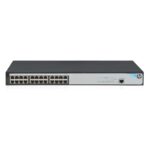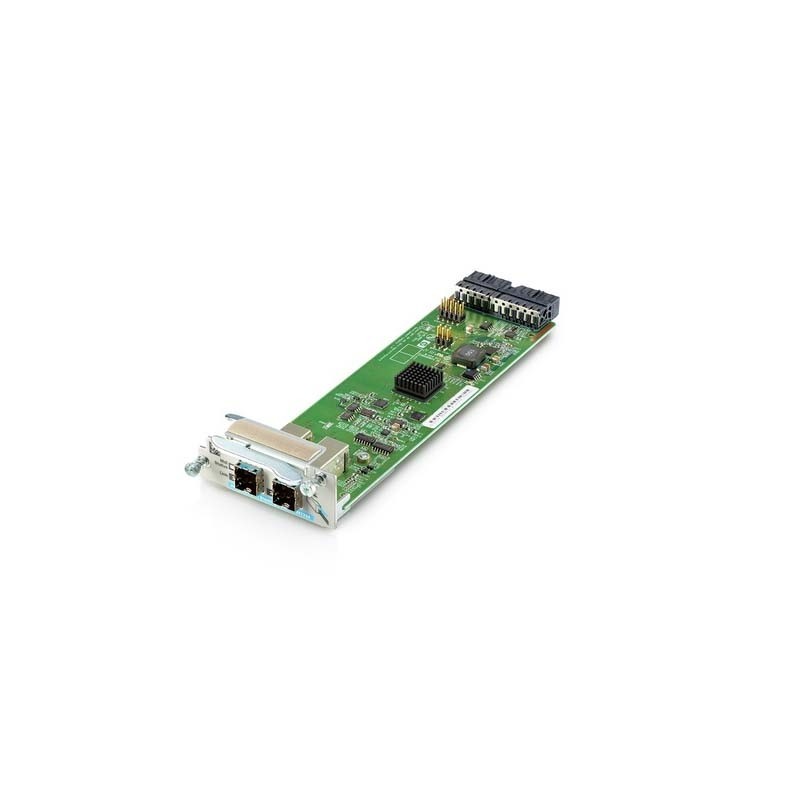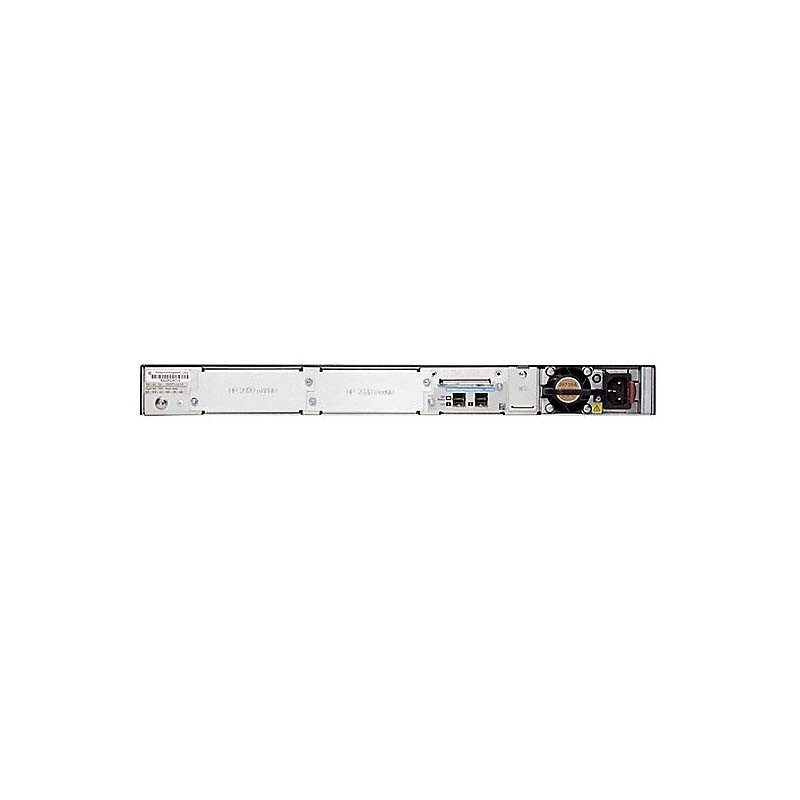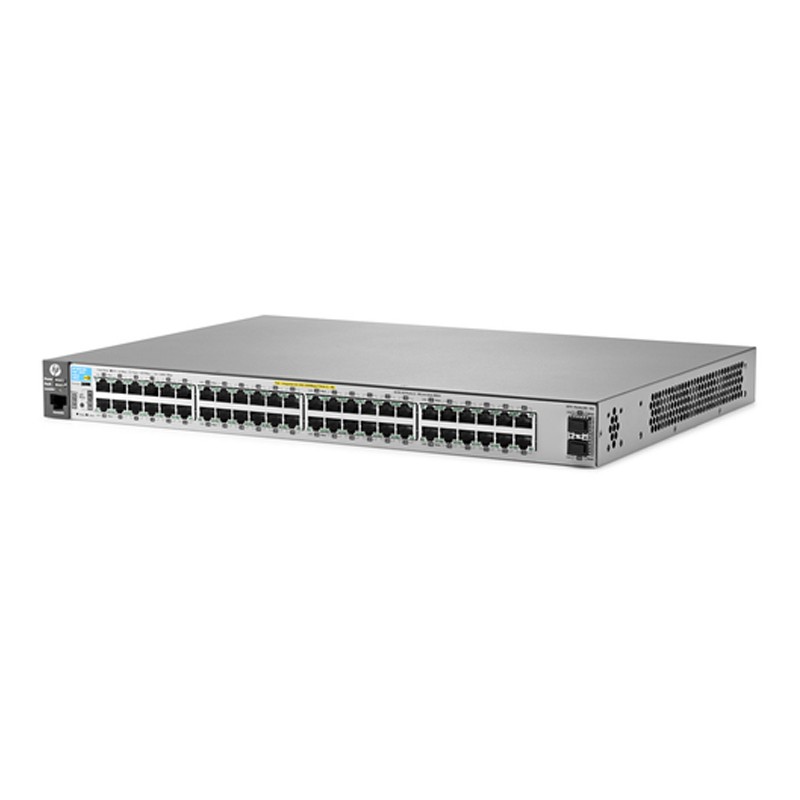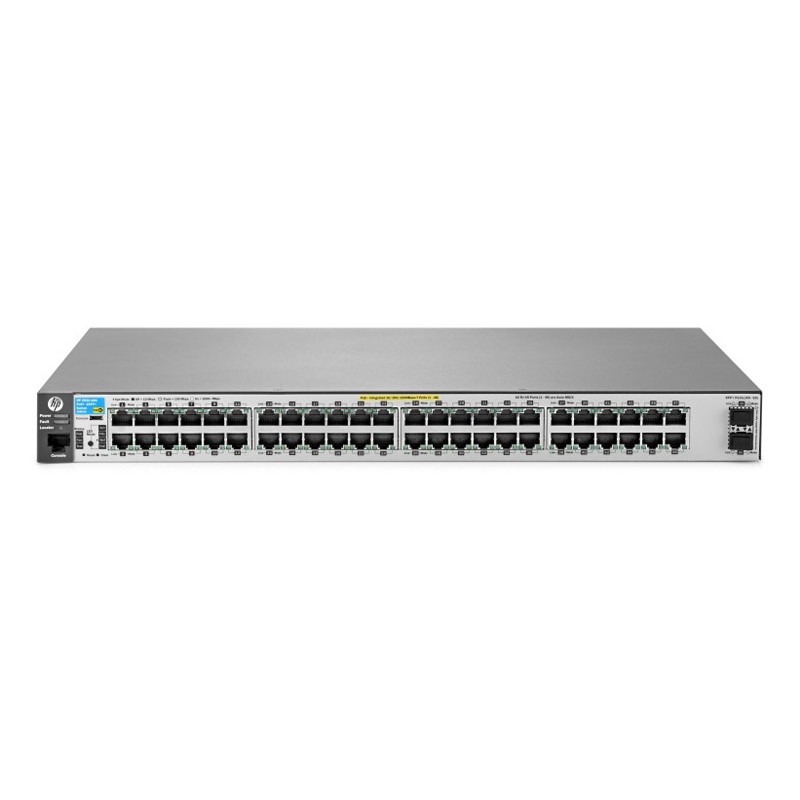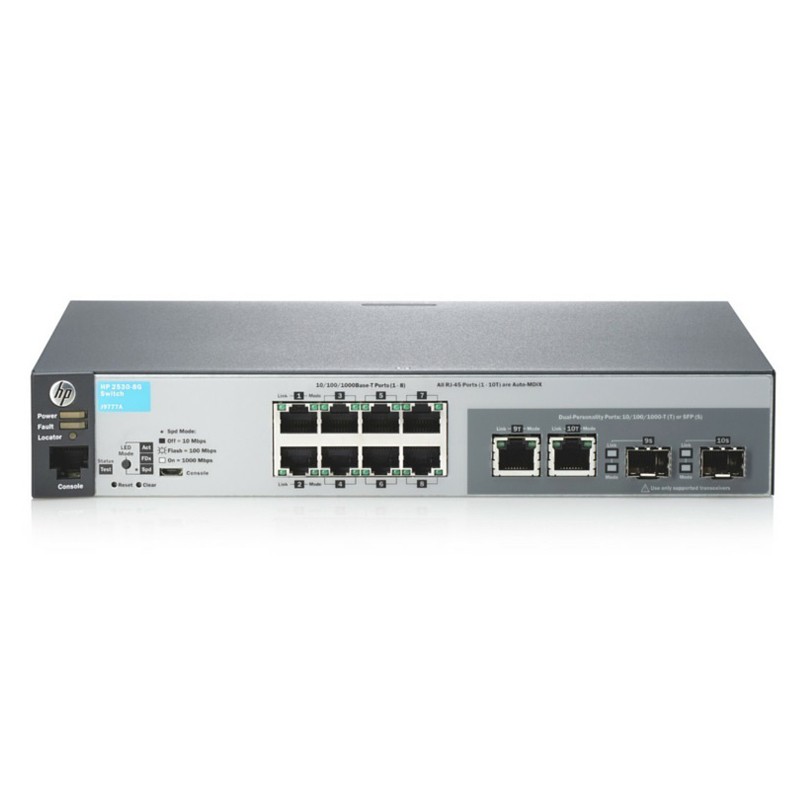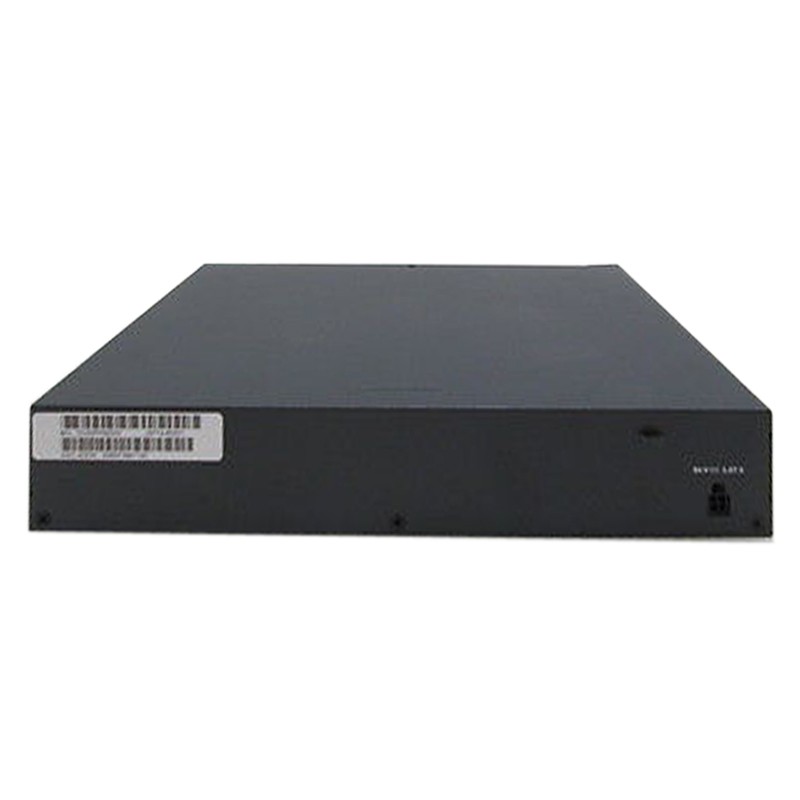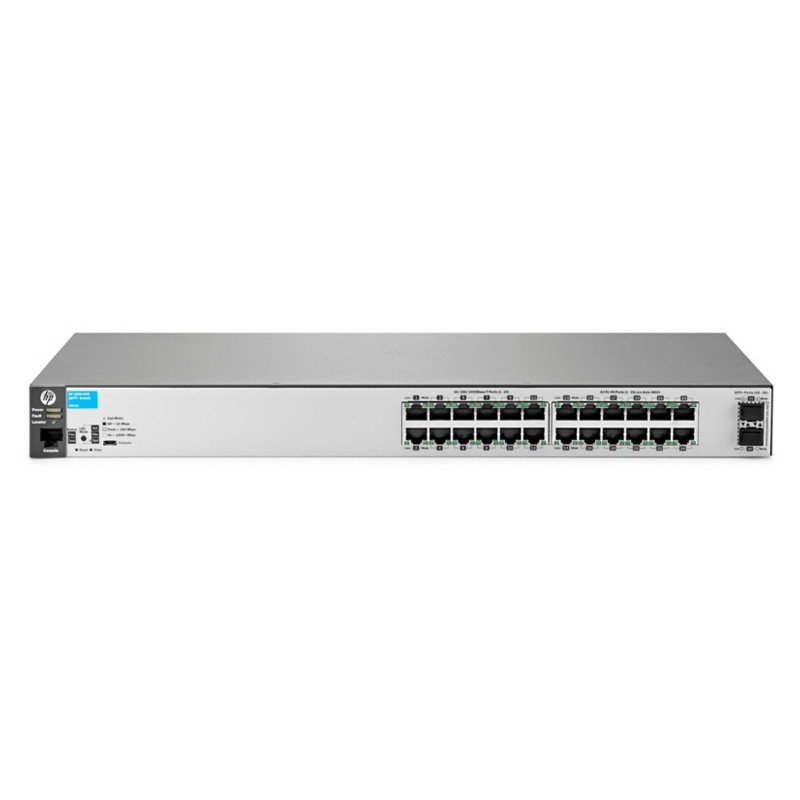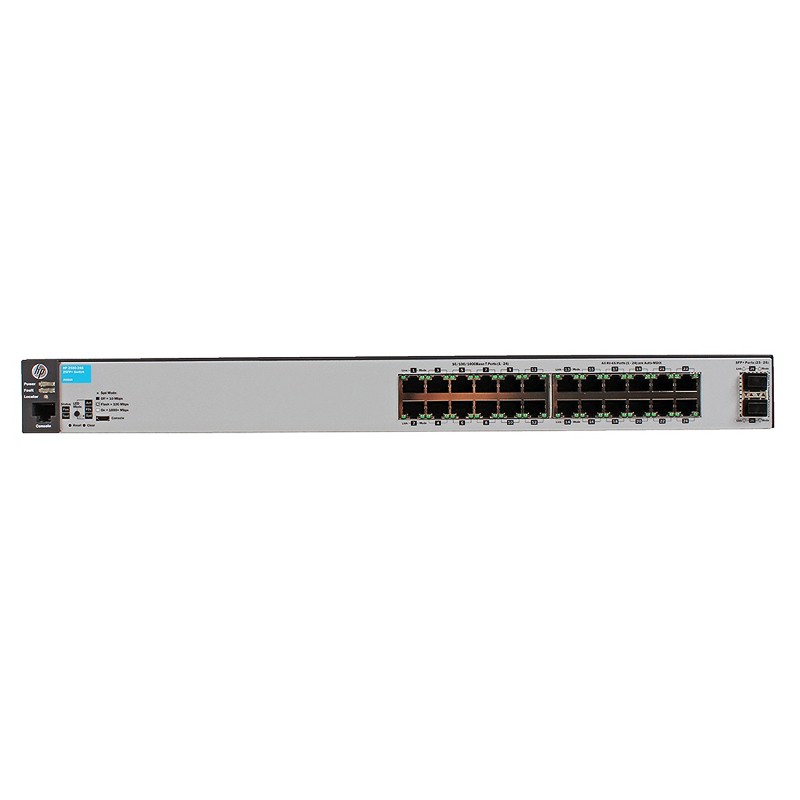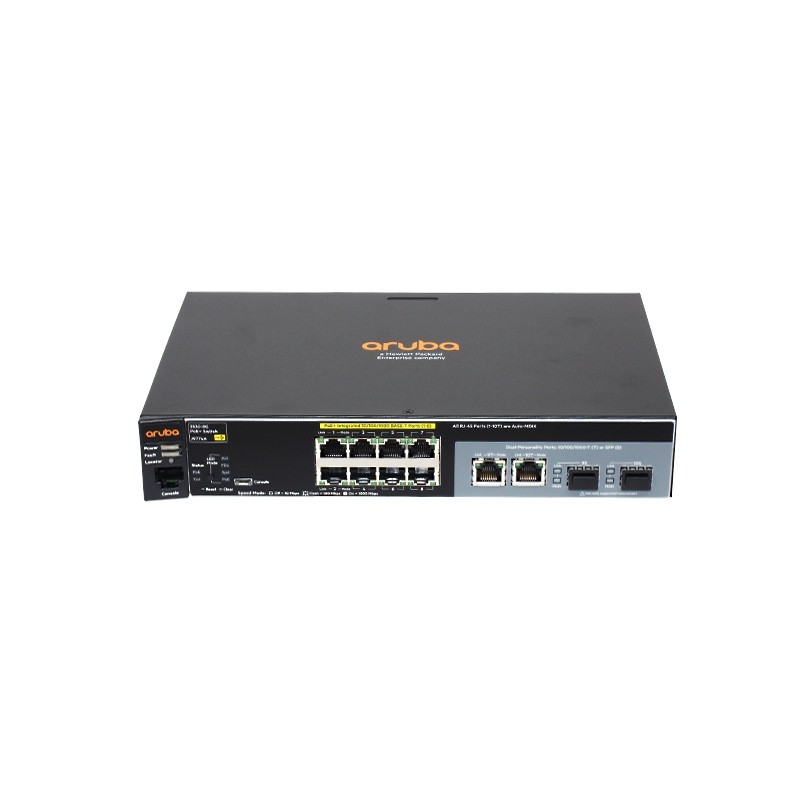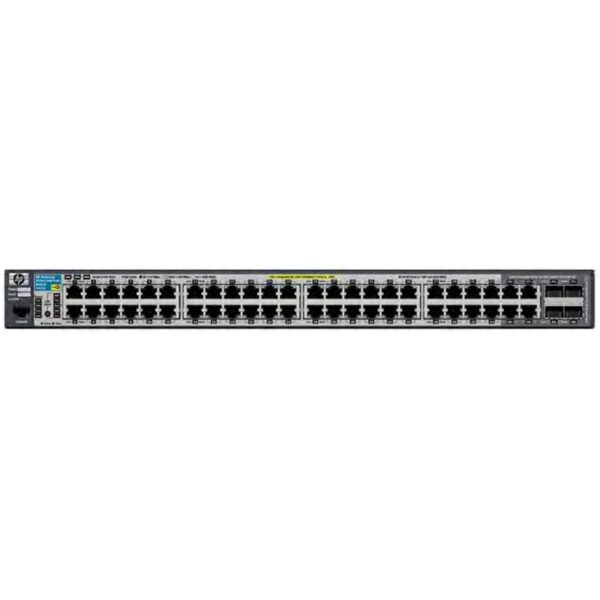
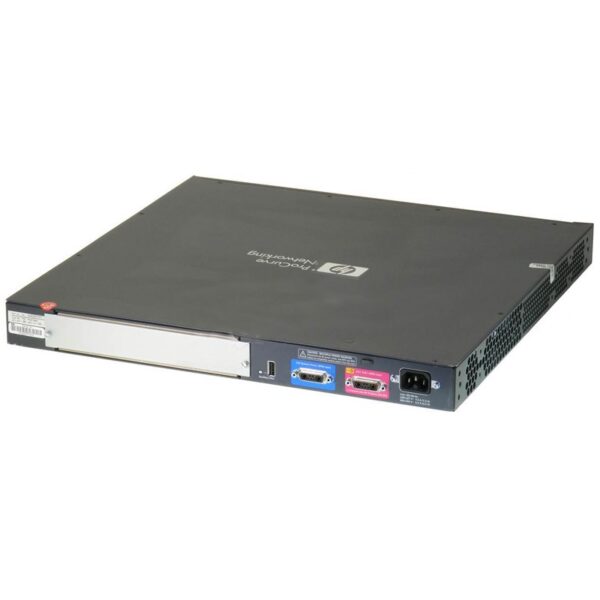
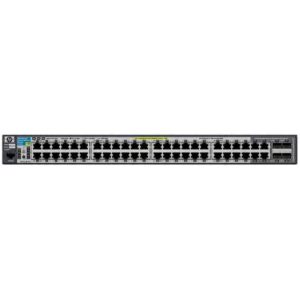
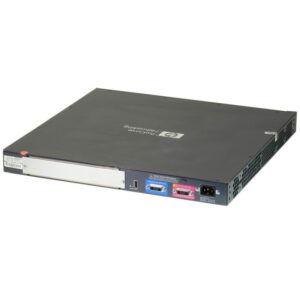
J9311A
| Model: | J9311A – HP 3500 and 3500 yl Switch |
| Detail: | HP 3500-48G-PoE+ yl Switch |
- Description
Description
J9311A Specifications |
|
|
Type |
HP 3500-48G-PoE+ yl Switch |
|
System specifications |
|
|
I/O ports and slots |
· 44 autosensing 10/100/1000 ports; Media Type: Auto-MDIX; Duplex: 10BASE-T/100BASE-TX: half or full; 1000BASE-T: full only (IEEE 802.3 Type 10BASE-T, IEEE 802.3u Type 100BASE-TX, IEEE 802.3ab Type 1000BASE-T) · 1 RJ-45 serial console port · 4 dual-personality ports; each port can be used as either an RJ-45 10/100/1000 port (IEEE 802.3 Type 10BASE-T; IEEE 802.3u Type 100BASE-TX; IEEE 802.3ab 1000BASE-T Gigabit Ethernet) with PoE or an open mini-GBIC slot (for use with mini-GBIC transceivers) · Supports a maximum of 4 10-GbE ports |
|
Memory and processor Module |
10G module:ARM9 @ 200 MHz; packet buffer size: 36 Mb QDR SDRAM Management Module: Stackable memory and processor: Freescale PowerPC 8540 @ 666 MHz, 4 MB flash, 128 MB compact flash, 256 MB DDR SDRAM |
|
Mounting and enclosure |
Mounts in an EIA-standard 19 in. telco rack or equipment cabinet (hardware included); horizontal surface mounting only |
|
Management |
HP PCM+; HP PCM (included); command-line interface; Web browser; configuration menu; out-of-band management (serial RS-232C) |
|
Performance |
|
|
1000 Mb Latency |
< 3.4 µs (FIFO 64-byte packets) |
|
10 Gbps Latency |
< 2.1 µs (FIFO 64-byte packets) |
|
Throughput |
up to 111.5 Mp/s |
|
Routing/Switching capacity |
149.8 Gb/s |
|
Switch fabric speed |
153.6 Gb/s |
|
Routing table size |
10000 entries (IPv4) |
|
MAC address table size |
64000 entries |
|
Physical specifications |
|
|
Dimensions (H x W x D) |
4.4 X 44.3 x 43.0 CM (1.73 X 17.44 x 16.93 in) |
|
Weight |
7.05 kg (15.54 lb) |
|
Electrical specifications |
|
|
Frequency |
50 / 60 Hz |
|
Description |
The switch automatically adjusts to any voltage between 100-127 and 200-240 V with either 50 or 60 Hz. |
|
Maximum heat dissipation |
1144 BTU/hr (1206.9 kJ/hr) |
|
AC voltage |
100-127/200-240 V ac |
|
Current |
7.3/3.3 A |
|
Idle power |
132W |
|
Maximum power rating |
638W |
|
PoE power |
398 W |
|
Environmental specifications |
|
|
Operating temperature |
0°C to 55°C (32°F to 131°F); 40°C (32°F to 104°F) when used with any SFP+ 10-GbE |
|
Operating relative humidity |
40°C (15% to 95% @ 104°F) noncondensing |
|
Nonoperating/Storage temperature |
-40°C to 70°C (-40°F to 158°F) |
|
Nonoperating/Storage relative humidity |
65°C (15% to 90% @ 149°F) noncondensing |
|
Altitude |
Power: 55.6 dB, Pressure: 45.3 dB ISO 7779, ISO 9296 |
|
Safety agency certifications and emissions |
|
|
Safety |
CSA 22.2 No. 60950; UL 60950; IEC 60950; EN 60950 |
|
Emissions |
FCC Class A; VCCI Class A; EN 55022/CISPR 22 Class A |
|
Immunity |
EN: EN 55024, CISPR 24 ESD: IEC 61000-4-2; 4 kV CD, 8 kV AD Radiated: IEC 61000-4-3; 3 V/m EFT/Burst: IEC 61000-4-4; 1.0 kV (power line), 0.5 kV (signal line) Surge: IEC 61000-4-5; 1 kV/2 kV AC Conducted: IEC 61000-4-6; 3 V Power frequency magnetic field: IEC 61000-4-8; 1 A/m, 50 or 60 Hz Voltage dips and interruptions: IEC 61000-4-11; >95% reduction, 0.5 period; 30% reduction, 25 periods Harmonics: EN 61000-3-2, IEC 61000-3-2 Flicker: EN 61000-3-3, IEC 61000-3-3 |
|
Standards and protocols |
|
|
BGP |
RFC 1997 – BGP Communities Attribute RFC 2918 – Route Refresh Capability RFC 4271 – A Border Gateway Protocol 4 (BGP-4) RFC 4456 – BGP Route Reflection: An Alternative to Full Mesh Internal BGP (IBGP) RFC 5492 – Capabilities Advertisement with BGP-4 |
|
Device management |
RFC 1591 – DNS (client) HTML and telnet management |
|
General protocols |
IEEE 802.1ad Q-in-Q IEEE 802.1AX-2008 Link Aggregation IEEE 802.1D MAC Bridges IEEE 802.1p Priority IEEE 802.1Q VLANs IEEE 802.1s Multiple Spanning Trees IEEE 802.1v VLAN classification by Protocol and Port IEEE 802.1w Rapid Reconfiguration of Spanning Tree IEEE 802.3ad Link Aggregation Control Protocol (LACP) IEEE 802.3af Power over Ethernet IEEE 802.3x Flow Control RFC 768 – UDP RFC 783 – TFTP Protocol (revision 2) RFC 792 – ICMP RFC 793 – TCP RFC 826 – ARP RFC 854 – TELNET RFC 868 – Time Protocol RFC 951 – BOOTP RFC 1058 – RIPv1 RFC 1350 – TFTP Protocol (revision 2) RFC 1519 – CIDR RFC 1542 – BOOTP Extensions RFC 2030 – Simple Network Time Protocol (SNTP) v4 RFC 2131 – DHCP RFC 2453 – RIPv2 RFC 2548 – (MS-RAS-Vendor only) RFC 3046 – DHCP Relay Agent Information Option RFC 3576 – Ext to RADIUS (CoA only) RFC 3768 – VRRP RFC 4675 – RADIUS VLAN & Priority UDLD (Uni-directional Link Detection) |
|
IP multicast |
RFC 3376 – IGMPv3 (host joins only) RFC 3973 – Draft 2 PIM Dense Mode RFC 4601 – Draft 10 PIM Sparse Mode |
|
IPv6 |
RFC 1981 – IPv6 Path MTU Discovery RFC 2375 – IPv6 Multicast Address Assignments RFC 2460 – IPv6 Specification RFC 2464 – Transmission of IPv6 over Ethernet Networks RFC 2710 – Multicast Listener Discovery (MLD) for IPv6 RFC 2925 – Definitions of Managed Objects for Remote Ping, Traceroute, and Lookup Operations (Ping only) RFC 3019 – MLDv1 MIB RFC 3315 – DHCPv6 (client and relay) RFC 3484 – Default Address Selection for IPv6 RFC 3587 – IPv6 Global Unicast Address Format RFC 3596 – DNS Extension for IPv6 RFC 3810 – MLDv2 for IPv6 RFC 4022 – MIB for TCP RFC 4087 – IP Tunnel MIB RFC 4113 – MIB for UDP RFC 4213 – Basic Transition Mechanisms for IPv6 Hosts and Routers RFC 4251 – SSHv6 Architecture RFC 4252 – SSHv6 Authentication RFC 4253 – SSHv6 Transport Layer RFC 4254 – SSHv6 Connection RFC 4291 – IP Version 6 Addressing Architecture RFC 4293 – MIB for IP RFC 4294 – IPv6 Node Requirements RFC 4419 – Key Exchange for SSH RFC 4443 – ICMPv6 RFC 4541 – IGMP & MLD Snooping Switch RFC 4861 – IPv6 Neighbor Discovery RFC 4862 – IPv6 Stateless Address Autoconfiguration RFC 5095 – Deprecation of Type 0 Routing Headers in IPv6 RFC 5340 – OSPFv3 for IPv6 RFC 5453 – Reserved IPv6 Interface Identifiers RFC 5519 – Multicast Group Membership Discovery MIB (MLDv2 only) RFC 5722 – Handling of Overlapping IPv6 Fragments |
|
MIBs |
RFC 1213 – MIB II RFC 1493 – Bridge MIB RFC 1724 – RIPv2 MIB RFC 1850 – OSPFv2 MIB RFC 2021 – RMONv2 MIB RFC 2096 – IP Forwarding Table MIB RFC 2613 – SMON MIB RFC 2618 – RADIUS Client MIB RFC 2620 – RADIUS Accounting MIB RFC 2665 – Ethernet-Like-MIB RFC 2668 – 802.3 MAU MIB RFC 2674 – 802.1p and IEEE 802.1Q Bridge MIB RFC 2737 – Entity MIB (Version 2) RFC 2787 – VRRP MIB RFC 2863 – The Interfaces Group MIB RFC 2925 – Ping MIB RFC 2933 – IGMP MIB |
|
Network management |
IEEE 802.1AB Link Layer Discovery Protocol (LLDP) RFC 2819 – Four groups of RMON: 1 (statistics), 2 (history), 3 (alarm) and 9 (events) RFC 3176 – sFlow ANSI/TIA-1057 LLDP Media Endpoint Discovery (LLDP-MED) SNMPv1/v2c/v3 XRMON |
|
OSPF |
RFC 2328 – OSPFv2 RFC 3101 – OSPF NSSA RFC 5340 – OSPFv3 for IPv6 |
|
QoS/CoS |
RFC 2474 – DiffServ Precedence, including 8 queues/port RFC 2597 – DiffServ Assured Forwarding (AF) RFC 2598 – DiffServ Expedited Forwarding (EF) |
|
Security |
IEEE 802.1X Port Based Network Access Control RFC 1492 – TACACS+ RFC 2865 – RADIUS (client only) RFC 2866 – RADIUS Accounting RFC 3579 – RADIUS Support For Extensible Authentication Protocol (EAP) Secure Sockets Layer (SSL) SSHv2 Secure Shell |


